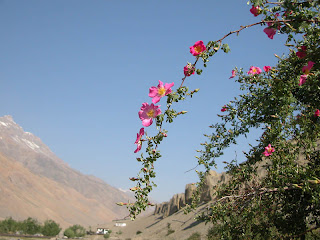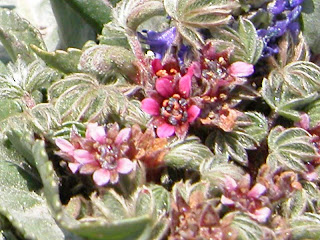
Sorbaria tomentosa


Potentilla atrosanguina

Rosa webbiana

Spiraea canescens

Potentilla eriocarpa

Sibbaldia purpurea

Pear

Wild strawberry

Wild rose
FAMILY OF THE WEEK: ROSACEAE
There are over 25 genera and around 215 species in India mainly confined to temperate Himalayas ascending up to 6000 meters.
Vegetative characters:
The plants are herbs, shrubs or trees several species of Rose and Rubus have prickles. Sometimes, as in Prinsepia and Crataegus the shrubs are armed with sharp spines which are modified branches. Vegetative reproduction takes place in several ways.
The leaves are alternate and simple, pinnately or palmately compound. The stipules are usually present.
Inflorescence and flowers:
The flowers are rarely solitary or fascicled, but commonly they are arranged in various types of definite or indefinite inflorescences. The flowers are actinomorphic or sometimes strongly zygomorphic, bisexual or unisexual,polygamous, pentamerous, hypogynous, peri or epigynous. The calyx is of typically five basally connate sepals; the calyx tube is free or adnate to the ovary. The aestivation is imbricate or valvate. In some genera an epicalyx is also present. The corolla is of generally five free petals (there are numerous petals in cultivated species of Rosa) which are usually imbricate in bud. The number of stamens is variable from one to many. They are often in whorls. The filaments are distinct or sometimes monoadelphous. The anthers are dithecous and introrse. A cushion shaped or ringlike nectar secreting disc is present between the stamens and carpel. The gynoecium shows much variation. There are ten different tribes of gynoecial characters and type of fruits.
Seeds:
The seeds are usually without endosperm.
Pollination and dispersal:
In most Rosaceae the nectar is collected in the receptacular tube and easily licked by insects. The flowers are mostly protogynous and favour cross pollination.
The seeds are dispersed by animals and birds.
Examples:
Rosa multiflora (Rose)
Rosa damascene
Rosa indica
Rosa banksiae
Rosa centifolia
Pyrus mallus (Apple)
Pyrus communis (Pear)
Prunus persica (Peach)
Prunus domestica
Prunus institia (Plum)
Prunus armeniaca (Apricot)
Prunus amygdalous (Almond)
Fragaria chiloensis (Garden Strawberry)
Fragaria vesca L. (Alpine strawberry)
Spiraea
potentilla
Brambles
Cinquefoil
No comments:
Post a Comment